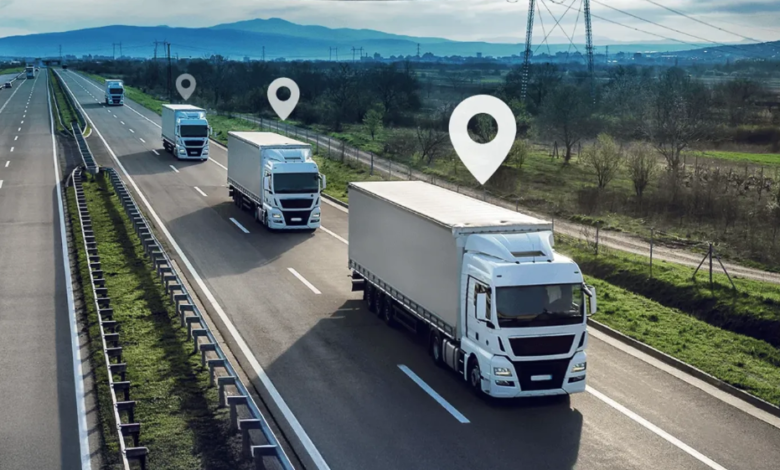The Real Difference Between Basic Tracking and Actual Transport Management

It’s how most transport companies start. Each vehicle has a GPS tracker, maybe a spreadsheet is created with people’s schedules and a few phone calls are made to achieve pickups. As long as enough trucks are in play and there are enough open communication systems between all involved, it works fine.
But when a lot more vehicles and a lot more drivers and a lot more customers come into play, that tracking no longer feels like tracking. Sure, you know where your trucks are, but you’re still playing catch-up trying to figure out who should grab the urgent pickup, what route might be best, why the delivery is taking too long to get to the customer, and how to let the customer know without making fifteen phone calls first.
The difference between tracking and management is being caught up in the communication fray or not. And the gap is much bigger than people think.
What tracking actually says
Tracking says DOTs on a map that connect to an actual person behind the wheel. Tracking allows you to say, “Driver A is currently on Highway 95.” “Driver B just turned right into the loading dock. That’s great news!” Because trust me, it’s better than having no idea where any of your vehicles are.
But tracking doesn’t say, “Driver A is off route.” “Driver B will be done loading at X time, so you should let the customer know.” It doesn’t allocate who should take over that urgent pickup or investigate whether there’s currently capacity at any of your other active stops in the timeframe needed.
No, tracking doesn’t do that. It gives you visibility but not direction.
The coordination issue
Where it becomes expensive. Because when you only have tracking, someone – multiple someones – spends their day catching up. They’re beholden to what’s on the screen tracking them, what’s written down as schedules, what’s available in customer emails and drivers’ needs. They connect the dots for everyone else.
And that person ultimately becomes a bottleneck. They cannot function well under pressure with too many moving parts effectively connected merely through limited technology. So when a customer calls asking when their delivery will arrive, rather than have an answer in a split second, someone does math based on where the truck is, what stops are left and how long each usually takes.
It’s not that people can’t do this. It’s that doing this thousands of times a day with dozens of vehicles inevitably causes stress and mistakes. That’s why so many operations upgrade to TMS transport management software that do this for their staff instead of relying on people to play the connective tissue in between all disjointed parts.
See also: Why Businesses Need a Performance Marketing Platform Today
What management systems manage
Real transport management systems take tracking into account as merely one part of a much larger solution. Wherever the vehicles are located, that information informs route allocation, customer alerts and billing practices thereafter.
When a new booking comes through, it accesses who is closest based on vehicle location, programmed stops already scheduled, driver hours and delivery windows. When a driver finishes loading up their vehicle at one stop, an automatic alert goes to the customer confirming progress without anyone needing to sit there on speakerphone.
When something starts falling behind schedule, the system alerts you because it knows this before it becomes an even larger crisis.
This is what people mean by integrated systems talking to one another – the booking interface talks with dispatch talk with tracking talk with customer portals talk with billing. It’s all one-to-one rather than hopping information across five disjointed areas assuming people will have the time and ability to enter the same information at least twice if not five times.
The knowledge gap
It’s not about technology; it’s about knowledge. Tracking gives segmented information access. Your tracking app knows location. Your spreadsheet knows who was booked when. Your email knows the customer’s requests. The notebook in your driver’s lap knows how many stops were actually made and what took place at each one.
But none of this information ever gathers together.
So when someone asks simple questions like how many deliveries we made last month and what was our average turnaround time for delivery? You can’t just pull up a report; you need to piece together information from multiple places cross-referencing everything while hoping you didn’t forget any meaningful tidbits along the way.
Management systems track all of this information accordingly. Booked worked on get filed away for future conversations or historical transparency later. You’re now not just tracking vehicles; you’re tracking work efforts that rely on facts behind every decision made.
When the upgrade makes sense
Not every transport company needs such sophisticated systems from the start. If you’re three trucks deep servicing local deliveries and know your customers by first name, you don’t want to have the overhead of a convoluted system just yet.
But it makes sense when your drivers are hired just to coordinate things and make communication easier rather than actually operating behind-the-wheel responsibilities. It makes sense when trucks are frequently calling into the office without concrete proposals in mind for next steps or when plans are formulated only for team members to box themselves into too small of areas because they can’t afford taking on more business yet out of fear of losing what they already have on their plates.
Usually, math works out once it’s cheaper to have the system than to continue using human error based on inefficiency/bottlenecking. For some businesses that’s five vehicles; for others it’s twenty. It’s not a matter of size – but size of complication.
What changes from day to day
With basic tracking, your operation is reactionary from what someone asks of you at the front office vs. how you’re armed to handle it – and what data/labor needs to be caught up after-the-fact to reconcile everything into place.
With management systems, operations go into predictive mode since humans aren’t bogged down with menial tasks constantly playing catch-up in real time or however fast they can get by while maintaining stress levels.
Drivers call less asking which stop they should take next because they’ve already been alerted through the system that’s at better equipped predicting these moves and recommending steps along the way. Customers call less asking where their delivery is because they’re getting automated alerts along the way ensuring they’ve been taken care of without needing someone in person to help mitigate that time sensitive stress.
Dispatchers spend less time scheduling hours by hand because systems recommend optimal times in a matter of minutes while considering factors that human beings would take 45 minutes or more factoring in refueling stations along the way.
The same amount of people manages far more simply – NOT because they’re working harder – but because they’re no longer so bogged down with keeping everything in line for free movement at last.
The bottom line
Basic tracking tells you where things are at in life. Transportation management tells you what to do about them – in real time and proactively. It doesn’t make much of a difference when operations are simple however the minute coordination becomes the hardest part of the job IS when it becomes an expensive hassle day-in-and-day-out – and one that should be changed.




